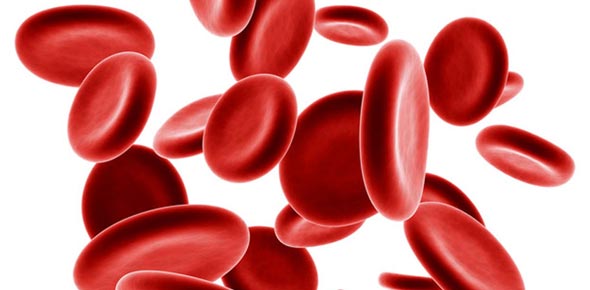Bloodborne Pathogens Quiz Questions & Answers

Remember to report any exposures to the employee health nurse!
- 1.
Some of the bloodborne pathogens healthcare workers are at risk for are:
- A.
Hepatitis B virus (HBV)
- B.
Hepatitis C virus (HCV)
- C.
Human Immunodeficiency Virus (HIV)
- D.
All of the above
Correct Answer
D. All of the aboveExplanation
The correct answer is "All of the above." Healthcare workers are at risk for contracting bloodborne pathogens such as Hepatitis B virus (HBV), Hepatitis C virus (HCV), and Human Immunodeficiency Virus (HIV) due to their frequent exposure to blood and other bodily fluids. These pathogens can be transmitted through needlestick injuries, contact with infected blood, or exposure to other contaminated materials. It is crucial for healthcare workers to follow proper infection control measures and receive necessary vaccinations to protect themselves from these potentially life-threatening infections.Rate this question:
-
- 2.
Exposure occurs through:
- A.
Needle sticks
- B.
Cuts from sharp instruments contaminated with an infected patients blood
- C.
Contact of the eye, nose, mouth, or skin with a patients blood
- D.
All of the above
Correct Answer
D. All of the aboveExplanation
Exposure to bloodborne pathogens can occur through various means, including needle sticks, cuts from contaminated sharp instruments, and contact of the eye, nose, mouth, or skin with a patient's blood. All of these routes can potentially lead to the transmission of infectious diseases, making it important for healthcare workers to take appropriate precautions to minimize the risk of exposure.Rate this question:
-
- 3.
Most exposures result in infection:
- A.
True
- B.
False
Correct Answer
B. FalseExplanation
Most exposures do not result in infection. In many cases, the body's immune system is able to effectively fight off pathogens and prevent infection from occurring. Additionally, factors such as vaccination, hygiene practices, and the use of protective measures can further reduce the risk of infection. Therefore, it is incorrect to say that most exposures result in infection.Rate this question:
-
- 4.
Many needle sticks can be prevented by
- A.
Recapping needles
- B.
Disposing of used needles in appropriate sharps containers
- C.
Disposing of needles in the trash can
- D.
Not using safety needles
Correct Answer
B. Disposing of used needles in appropriate sharps containersExplanation
Disposing of used needles in appropriate sharps containers is the correct answer because it is the safest and most effective method to prevent needle sticks. Sharps containers are specifically designed to safely contain used needles, preventing accidental injuries. Recapping needles can actually increase the risk of needle sticks, as it requires handling the contaminated needle. Disposing of needles in the trash can is also unsafe, as it can lead to accidental injuries for waste handlers. Not using safety needles is not a preventive measure, as safety needles are designed to reduce the risk of needle sticks.Rate this question:
-
- 5.
Exposures to the eyes, nose and mouth can be prevented by
- A.
Eye and face protection
- B.
Gowns
- C.
Gloves
- D.
Hair nets
Correct Answer
A. Eye and face protectionExplanation
Exposures to the eyes, nose, and mouth can be prevented by using eye and face protection. This can include safety goggles or glasses that cover the eyes and a face shield that provides additional coverage for the face. These protective measures create a barrier between the person's eyes, nose, and mouth and any potential hazards, such as chemicals, flying particles, or infectious droplets. By wearing eye and face protection, individuals can reduce the risk of injury or infection in these vulnerable areas.Rate this question:
-
- 6.
Goggles and masks should be used everytime you suction or perform oral care on a patient
- A.
True
- B.
False
Correct Answer
A. TrueExplanation
Goggles and masks should be used every time you suction or perform oral care on a patient to protect yourself from potential exposure to bodily fluids or respiratory droplets. These protective measures help prevent the transmission of infectious diseases and maintain a safe environment for both the healthcare provider and the patient.Rate this question:
-
Quiz Review Timeline +
Our quizzes are rigorously reviewed, monitored and continuously updated by our expert board to maintain accuracy, relevance, and timeliness.
-
Current Version
-
Mar 19, 2023Quiz Edited by
ProProfs Editorial Team -
Oct 08, 2009Quiz Created by
Nursenicki7
- Addiction Quizzes
- AIDS Quizzes
- Allergic Quizzes
- Alzheimer Quizzes
- Anemia Quizzes
- Arthritis Quizzes
- Asthma Quizzes
- Bipolar Disorder Quizzes
- Burn Quizzes
- Cancer Quizzes
- Cerebral Palsy Quizzes
- COPD Quizzes
- Dengue Quizzes
- Depression Quizzes
- Diabetes Quizzes
- Disorder Quizzes
- Gastrointestinal Disease Quizzes
- Headache Quizzes
- Hepatitis Quizzes
- Hypertension Quizzes
- Infectious Disease Quizzes
- Influenza Quizzes
- Insomnia Quizzes
- Lung Cancer Quizzes
- Lung Disease Quizzes
- Malaria Quizzes
- Neoplasia Quizzes
- Obesity Quizzes
- Osteoporosis Quizzes
- Pandemic Quizzes
- Personality Disorder Quizzes
- Pneumonia Quizzes
- Pulmonology Quizzes
- Sexually Transmitted Disease Quizzes
- Sinus Quizzes
- SLE Quizzes
- Stroke Quizzes
- Thyroid Disease Quizzes
- Tuberculosis Quizzes
- Ulcer Quizzes
- Viral Quizzes
 Back to top
Back to top


